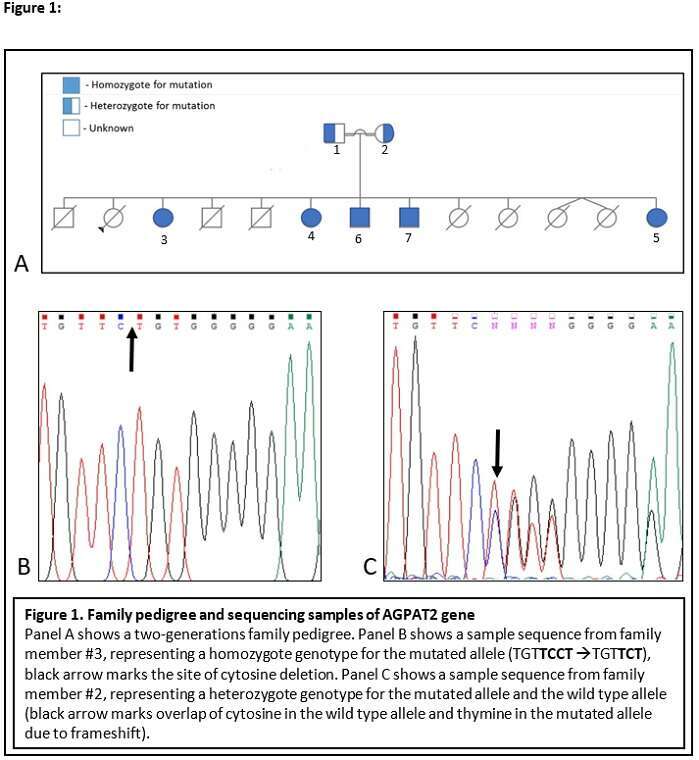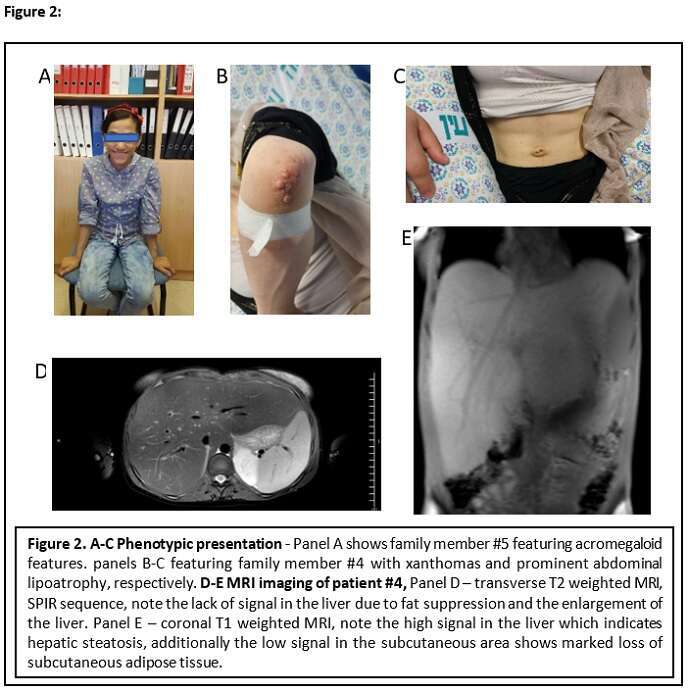
Identification of Genetic Defects in a Family with a Rare and Severe Form of Metabolic Syndrome
2The Diabetes Unit and the Endocrine Service, Hadassah-Hebrew University Medical Centre
3Center for Prevention and Treatment of Atherosclerosis, Hadassah Hebrew University Medical Center
4Pediatrics, Rambam Medical Center
5Diabetes Clinic, Clalit Health Services
Background: Lipodystrophy is a group of disorders characterized by complete or partial loss of adipose tissue along with an extreme form of metabolic syndrome. We studied the genetic etiology of a family with a severe form of early onset metabolic syndrome.
Methods and results: Three offsprings of this pedigree had generalized lipoatrophy, acromegaloid features, extreme hypertriglyceridemia, diabetes mellitus and hypoleptinemia. Triglyceride levels ranged between 1007mg/dL to 7935mg/dL. Diabetes mellitus developed during puberty, poorly controlled with therapy (HbA1C levels 8.36%-9.98%). The index case preformed an euglycemic hyperinsulinemic clamp study (80mU/m2⋅min insulin dose), demonstrating severe insulin resistance with a low rate of glucose disposal (M=1.78mg/kg⋅min). Whole exome sequencing of the propositus revealed a frameshift mutation (g.139568379delC, p.Gly221Glufs) in the gene AGPAT2, generating a truncated protein. In silico analysis of the mutation determined high pathogenicity probability for the mutation. Subsequently, we preformed sequencing of the target gene in remaining family members (figure 1). The family presented an autosomal recessive inheritance pattern in which the two related parents are heterozygote and five of the offspring are homozygote. Three of the offsprings present a severe phenotype of congenital generalized lipodystrophy (figure 2), and the parents may have an incomplete phenotype (2 offsprings were not available for full clinical evaluation). Segregation analysis found segregation of the trait with the mutation with a LOD score of 2.4 (considering all offsprings as affected).
Summary: Type 1 congenital generalized lipodystrophy is caused by a mutation in 1-Acylglycerol-3-Phosphate O-Acyltransferase 2 (AGPAT2). We describe a rare mutation in AGPAT2 leading to severe form of type 1 congenital generalized lipodystrophy. To our knowledge, this is the first description of homozygosity and pathogenicity of this mutation. Once diagnosed the patients can be treated with recombinant leptin. The study sets an example for precision medicine allowing for understanding disease etiology and tailoring treatment.



Powered by Eventact EMS